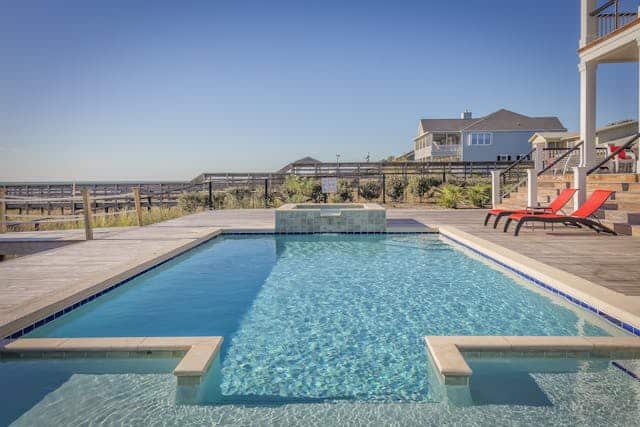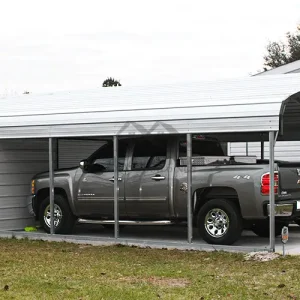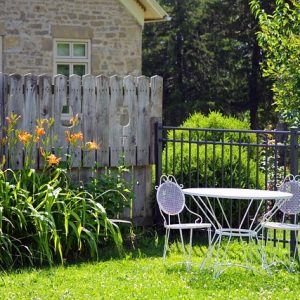If you are in the market for a pool, you may also want to consider eco-friendly and sustainable design options. The world is cluttered with pools, but a good pool builder will know how to build a swimming pool with sustainability in mind.
With this being said, I would like to highlight 7 ways to design an eco-friendly and sustainable pool.
Pool cover:
First, you will want a pool cover. When someone thinks of a pool cover, he may think only of the debris that the pool cover prevents from infiltrating the pool. However, pool covers go well beyond maintaining a clean pool.
Pool covers are essential for limiting water evaporation. The more a pool is left uncovered, the more the water returns to the sky from which it came. Not only that, the pool cover also reduces heat loss much like a heated pot of water retains its heat better when it is covered with a lid, so a pool retains its heat better when it is covered.
Heat Pumps:
Second, you should know that not all heat pumps are created equal. There are many options to choose from, so the buyer must choose wisely. A relatively new approach to heating pools is the solar thermal approach. While gas and electric pumps have won the attention of many, the solar thermal approach is on the rise.
As the name suggests, solar thermal technology uses solar panels to harness the sun’s energy. The energy is then used to heat the pool without using gas or electricity. Using this approach eliminates a portion of the electric bill that would normally be allotted to heating a pool, and it is also a wise choice for those concerned about the environment.
Rainwater Harvesting:
Third, you may be caught off guard, but that’s right – start harvesting rainwater for your pool. This eco-friendly approach is not only good for the environment but is also fun. If you find a reliable swimming pool builder, you will likely find someone who can help you install a rainwater harvesting system for your new pool.
The system is just as it sounds. Constructing a pool with a rainwater harvesting system nearby will allow you to use the collected rain as a supply for your pool. This may seem unimportant, but it is not. Water does not naturally stay in a pool. Instead, water naturally evaporates. Thus, you will need to find a water source for your pool, and rainwater is surely the purest source you could find.
Fiberglass Pools:
Fourth, you may not have thought much about the material for the construction of your pool, but you should. If you have been in the market for a vinyl-lined pool, you may want to think again. Vinyl-lined pools are commonly known to need to be replaced after ten years. Concrete pools also require unique maintenance that can be costly and bad for the environment.
So, what’s the solution? Going with a fiberglass pool has been the solution for many. The fiberglass pool is designed as one piece, which helps to reduce the amount of contaminants associated with the construction and installation of the pool. They also last much longer than vinyl-lined pools and therefore will not quickly turn into a massive piece of waste that is taking up room in a hole in a garbage dump.
LED lighting:
environment, you must learn to think with energy efficiency in mind. With that being said, LED lighting is a must-have for the eco-friendly pool shopper.
The old way of lighting a pool is highly expensive. The expense the traditional lighting system incurs is a sure sign that the traditional lighting system uses up valuable electricity at a high rate. Once again, if you find a reliable swimming pool builder, you will certainly find someone who knows how to install LED lighting. The low-voltage LED lights will save you money when it is time to pay your electric bill and will also help to conserve usable electricity.
Pool automation:
Sixth, if you want to make a difference in the environment, you will also want to consider pool automation. As technology continues to get more sophisticated, automation does as well. Automation is a computerized process whereby the computer or software does the work.
This technology has been harnessed for the sake of pool lovers and the environment. With pool automation, you can control the varying functions of your pool remotely. You can set up times and schedules when these functions will operate.
For instance, if you want to heat your pool at certain times of the day, all you need to do is plug it into the system, and pool automation will take care of the rest. If you want your filter to run at certain times of the day, the task is virtually the same. This will prove to save you time, but it is also good for the environment because it helps to reduce energy consumption.
Natural pools
Seventh, you may want to know that while chlorine pools may be the popular choice, natural pools are being built for several reasons, with eco-friendliness and sustainability at the top of the list. A natural pool may cost more, but it is a wonderful way to get rid of the chemicals and conserve energy.
Conclusion
I hope these 7 tips to creating an eco-friendly and sustainable pool design have helped. If you are in the market for a pool, Desert Springs Pools & Spas can help. You can contact them at 702-452-5900. They not only know how to construct pools, but they also know how to ensure your pool is designed with sustainability in mind.
Published By: improveresidence.com




